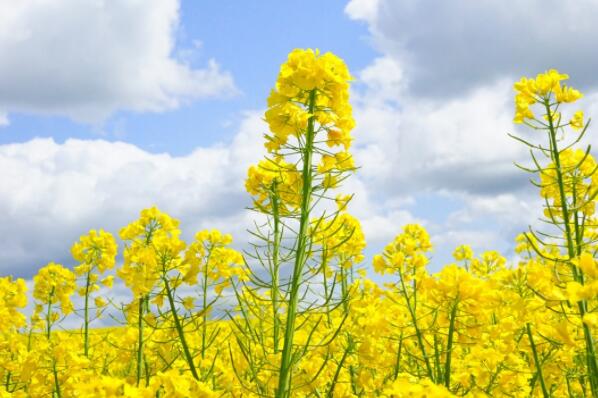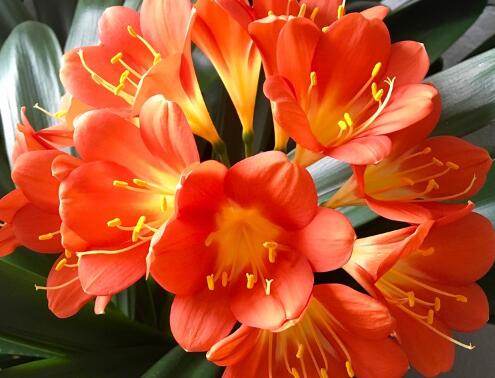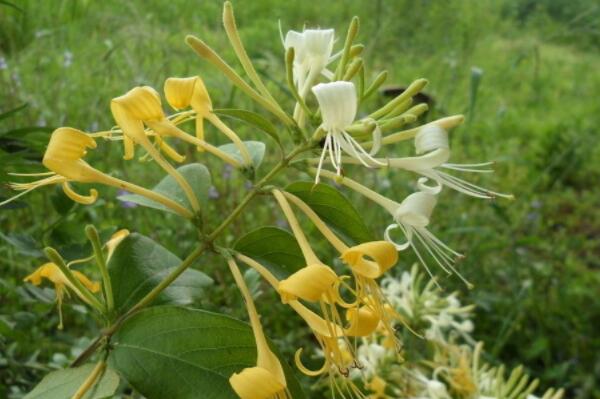When will winter rape grow and blossom? How do you plant it? How much is the yield per mu?
Winter rape, also known as Brassica napus, cold cabbage, Laver, sowthistle, bolting mustard, ladyleaf, Buddha vegetable, refers to the rape that needs to survive the winter in the process of growth. So when will winter rape plant and blossom? How do you plant it? How much is the yield per mu?

When will winter rape plant and blossom?
Planting:
1. Choosing a suitable sowing time is very important for rape planting. Rape sowing time is usually from late September to mid-October. But this time also has a certain regional, can be divided into spring sowing and autumn sowing, and other crop rotation, interplanting. Sometimes you can do it double or triple. If it is winter rape in the north, you can apply some wax fertilizer to prevent the rape from freezing.
2. The seeds were sown in the northwest of Chongqing in the first and middle of September, and in the southeast of Chongqing in the middle and late September. In the same area, the places with high elevations are earlier, and those with lower elevations are a little later. Seed dressing with new high-fat film before sowing can keep heat, keep moisture, absorb swelling, improve seed germination rate and make seedlings strong. Repelling underground pests and isolating virus infection. It can also be mixed with seed coating agent. Quantitative sowing in separate compartments, uniform grain drop, drenching human and animal dung water after sowing, and shallowly covering the seeds with plant ash.
Flowering:
Winter rape area and yield account for more than 90%, mainly concentrated in the Yangtze River basin, spring rape is concentrated in the northeast and northwest regions, especially in Hailar region of Inner Mongolia. Plant at the end of September, harvest at the end of May, and blossom in autumn and spring.
How to grow winter rape?
The plant of winter rape is tall, the growing period is long, and needs more fertilizer. Attention should be paid to the following points in fertilization:
1. For every 100 kg of rapeseed, 8.8-11.3 kg of nitrogen, 3-3.9 kg of phosphorus and 8.5-10.1 kg of potassium are needed to be absorbed. According to the target yield, combined with the difference of soil fertilizer supply and cultivated varieties, the type, quantity and application period of fertilizer needed were determined.
2. Rape base fertilizer can be divided into base fertilizer and seed fertilizer. The application of farm manure is about 3 tons per mu, combined with urea 11-16 kg or ammonium sulfate 25-27 kg (nitrogen fertilizer as base thin fertilizer generally accounts for more than 30% of the total nitrogen fertilizer), calcium superphosphate 20-30 kg, potassium chloride 5-10 kg. The lack of base fertilizer is made up by seed fertilizer, generally using mature human feces and available phosphorus and potassium fertilizer, which are concentrated in the row or hole when sowing or transplanting rape.
3. Rape topdressing is mainly used as seedling fertilizer and bolting fertilizer. If the lack of base fertilizer, rape growth is poor, early application of seedling bolting fertilizer, and appropriately increase the amount of topdressing. When rape seedling stage 4-5 true leaves, intermediate, fixed seedlings, combined with fixed seedlings applied 3 kg ammonium sulfate per mu, combined with mature human and animal feces and urine as seedling fertilizer. Bolting fertilizer plays a great role in promoting the growth and development of rape, increasing branches and fruits, and bud bolting fertilizer generally accounts for 30% and 40% of the total topdressing amount. The number and weight of rape seeds are related to the nutritional conditions in the later stage. When flowering and podding, 1% urea or calcium superphosphate or potassium dihydrogen phosphate can be sprayed if it is well ventilated and not shaded.
4. Although rapeseed needs less phosphorus than potassium, it is sensitive to phosphorus. Phosphorus can promote growth and development and increase the oil content of seeds. Phosphorus can be used repeatedly in rape, and it is better to use it as seed fertilizer or when transplanting. It should be applied before 5 leaves at the latest. The root system of rape has strong ability to absorb phosphorus, and calcium magnesium phosphate fertilizer should be used to grow rape in acidic soil. The effect of applying insoluble phosphate rock powder is also good. The amount of phosphate fertilizer is generally 20-30 kg per mu with calcium superphosphate or calcium magnesium phosphate fertilizer.
5. When the soil is deficient in potassium and the content of available potassium is less than 90 mg / kg, the effect of combined application of potassium fertilizer and nitrogen and phosphorus fertilizer is obvious, but the effect of applying potassium fertilizer alone is low. The effect of concentrated application of potash fertilizer as base fertilizer is the best, using 5-10 kg potassium chloride per mu.
6. Rape is sensitive to trace element boron, and boron deficiency will be "flowering but unfruitful". Rape Honda boron was sprayed once at seedling stage, bolting stage and early flowering stage, each time with 50 grams of borax per mu and 50 kilograms of water, and the effect was good. But boron application must not be excessive, so as to avoid toxicity.
What is the yield of winter rape per mu?
1. According to the statistics of Zhejiang Province, the average yield of rape in Zhejiang Province is 167.93 kg per mu, including less than 100kg rapeseed land per mu and experimental plots with a yield of 303.8 kg per mu.
2. Generally sowing about 0.5-0.75kg seeds per mu of seedling bed, 100000-160000 seedlings can be bred and more than 10 mu can be transplanted in the field.
Time: 2019-03-20 Click:
- Prev

How long does the seed of Cymbidium sprout? How much is the price per jin? How to plant it?
Magnolia, also known as Lycoris radiata and Lycoris davidiana, is an ornamental flower of the genus Lycoris of the family Amaryllidaceae. It is native to southern South Africa. It is a perennial herb with a florescence of 30-50 days. So, how long does it take for Cymbidium seeds to sprout? How much is the price per jin? How to plant it? How long does the seed of Cymbidium sprout?
- Next

How much is the price of honeysuckle seeds with one stem and two flowers per jin? How do you plant it? How long does it take to blossom and harvest?
Honeysuckle, also known as honeysuckle, sweet and cold fragrance, sweet cold and clear heat without hurting the stomach, fragrance can dispel evil. It is distributed in all provinces of China. So how much is the seed price of honeysuckle per jin? How do you plant it? How long does it take to blossom and harvest? I learned from the manager of Jiujiang seed Company
Related
- Fuxing push coffee new agricultural production and marketing class: lack of small-scale processing plants
- Jujube rice field leisure farm deep ploughing Yilan for five years to create a space for organic food and play
- Nongyu Farm-A trial of organic papaya for brave women with advanced technology
- Four points for attention in the prevention and control of diseases and insect pests of edible fungi
- How to add nutrient solution to Edible Fungi
- Is there any good way to control edible fungus mites?
- Open Inoculation Technology of Edible Fungi
- Is there any clever way to use fertilizer for edible fungus in winter?
- What agents are used to kill the pathogens of edible fungi in the mushroom shed?
- Rapid drying of Edible Fungi

